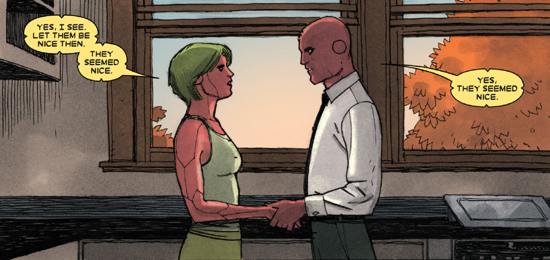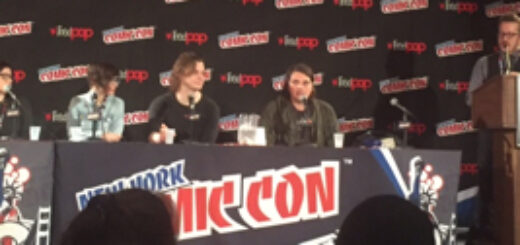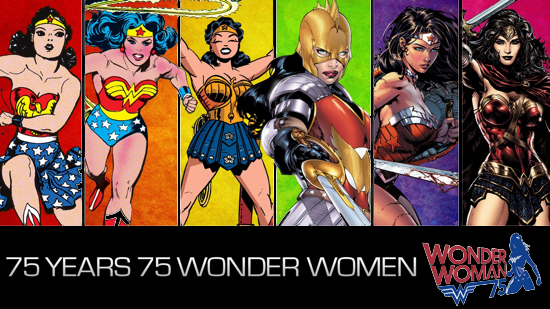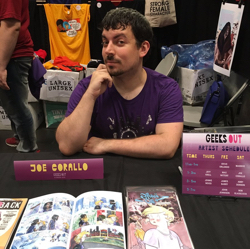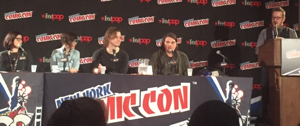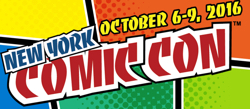Joe Corallo: Altered Perspectives
This past week has been an interesting one for me as far as comics are considered. I finally finished Tom King’s twelve issue run on The Vision – easily one of my favorite comics that Marvel has put out in a long time, and that’s something I never thought I’d say about a comic starring The Vision. If you haven’t read it, do yourself a favor. A friend of mine wrote this about it a while back if you’d like to read up on it more first.
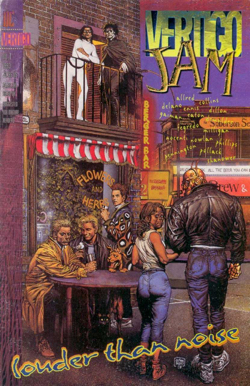 I finally started reading Jeff Lemire’s Trillium after putting that off for years. It’s a great read.
I finally started reading Jeff Lemire’s Trillium after putting that off for years. It’s a great read.
I also went through some of my piles of comics here and rediscovered my copy of Vertigo Jams. This comic, which was put out by Vertigo back in 1993, featured original eight page comics from the different creative teams; something I hope DC’s Young Animal line and others will do down the line. It really was a fun read.
Since this came out, Vertigo Jams included an eight pager from Rachel Pollack for Doom Patrol. I had honestly completely forgotten about this story and it was really exciting for me to read it again. It’s a cute little story about Dorothy accidentally releasing ghosts from their HQ and going out on the town with the S.R.S. to find them and bring them back. We get cameos from Niles Caulder, Robotman, and it ends with two queer women going home with each other after a date. What more could anyone ask for?
Speaking of Rachel Pollack, if you have an incredibly keen eye and a good memory, you may have noticed the Rachel Pollack reference in Gerard Way and Nick Derington’s Doom Patrol #2. In that issue, the Niles Caulder one page strip involves Niles in a hot air balloon passing a mountain with his face on it. Those of you familiar with Rachel’s run will notice that imagery of Niles’ face in a mountain running through issues #65 and #66 as part of the Sliding Through the Wreckage arc. If you think that comparison is a bit of a stretch, Gerard Way said it was a reference to Rachel’s run here.
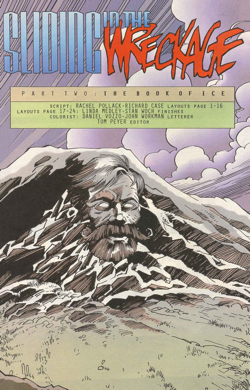 While Gerard Way has been referencing Rachel Pollack’s run in the new Doom Patrol, DC has still not announced any plans to reprint her run. Please, if you are reading this, upset about this fact like I am, and are in comics journalism or know someone who is I’m asking you consider writing about this as well.
While Gerard Way has been referencing Rachel Pollack’s run in the new Doom Patrol, DC has still not announced any plans to reprint her run. Please, if you are reading this, upset about this fact like I am, and are in comics journalism or know someone who is I’m asking you consider writing about this as well.
Her run on Doom Patrol is important in queer history and it’s important to get the works of incredibly talented people like Linda Medley and Ted McKeever, two artists that inarguably helped shape Rachel’s run, out there to more people as well. If you want to write about this yourself and don’t know where to start, reach out to me via the comments section and I will help you.
My final anecdote from last week for me in comics started Friday night getting drinks with fellow ComicMix columnist Martha Thomases. We discussed the state of the nation, what we have to do going forward under a Trump presidency, and Paul Jenkins. Martha is a staunch supporter of both the liberal wing of the Democratic party and of Paul Jenkins. She recently read Alters #2 and wanted me to read it to get my opinion to discuss it.
Spoilers ahead for Alters #2.
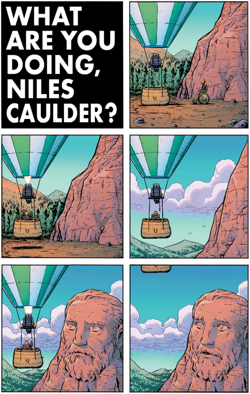 After more drinks than I care to confide to you, we went back to Martha’s so I could read her copy of Alters #2 and talk about it. The beginning for me was a little rocky. The issue opens with Chalice being interrogated by other Alters asking her probing questions including questions about the current medication she’s on and her DNA. It was a scene lacking in subtlety about Chalice’s transness and the sort of medical questions that could out her.
After more drinks than I care to confide to you, we went back to Martha’s so I could read her copy of Alters #2 and talk about it. The beginning for me was a little rocky. The issue opens with Chalice being interrogated by other Alters asking her probing questions including questions about the current medication she’s on and her DNA. It was a scene lacking in subtlety about Chalice’s transness and the sort of medical questions that could out her.
Shortly thereafter we have a sequence where Chalice is out of her superhero costume and at her home dressed as Charlie. She then has a verbal confrontation with her father that’s written in a way where it’s hard to tell if she’s talking about being an Alter, being trans, or both. That was the point of the scene, but it just didn’t feel entirely right to me. The issue wraps up with a physical confrontation that Chalice has with Matter Man in which Matter Man seems to go out of his way to use insults directed at Chalice’s femininity by both calling her a bitch and saying she punches like a girl. Perhaps if Matter Man only said one or the other it wouldn’t have stood out to me, but both was too much.
One thing I really appreciated was at the end of this issue they include a letter from Paul. The letter involved both a discussion with one of the trans people he has consulted with on writing this comic. Additionally, Paul Jenkins goes on to talk about the importance of respecting people’s gender identity and how dangerous, even lethal, it is to misgender someone. While I do have issues with the story in Alters so far, the second installment is showing more effort being put into raising awareness of issues affecting the trans community by having this letter at the end.
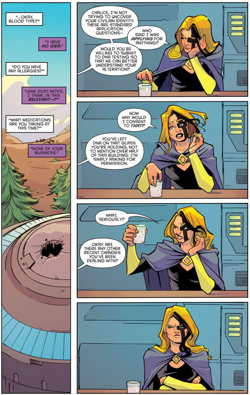 This led to a discussion with Martha on what it means to be an ally and a broader discussion on survival during the Trump years. Martha makes a point by saying that people like Paul Jenkins, someone who is sincerely trying to do a positive representation, is not the enemy and, of course, I agree wholeheartedly.
This led to a discussion with Martha on what it means to be an ally and a broader discussion on survival during the Trump years. Martha makes a point by saying that people like Paul Jenkins, someone who is sincerely trying to do a positive representation, is not the enemy and, of course, I agree wholeheartedly.
While I do understand the argument that some people might make about people how people need to avoid attacking those who are ignorant for using the wrong terminology, the flip side to that is that by framing the issue in that way we are continuing to look at everything through a privileged lens. Instead of catering to those more privileged in these situations we need to teach those more privileged that sometimes you have to sit down and listen instead of getting defensive or worse.
What Paul Jenkins has done, from what I can see based on Alters #2, is sit down and listen to some extent. He’s heard the criticism out there and is trying to take positive steps in the right direction. And while I still have my reservations, it’s still a great thing to see in a comic creator and I hope that Paul will be able to continue moving Alters down a positive path, including making a change in issue one for the trade to remove Chalice’s self misgendering referring to herself as the middle brother. Middle sibling or child works just as well.
Perhaps speaking to someone like Rachel Pollack, who has created a trans superhero for a team book before, could also be beneficial for someone like Paul. She certainly understands the topic on a level not many other people do and has written some profoundly moving moments with Coagula.
Anyway, that was my week. How was yours?


